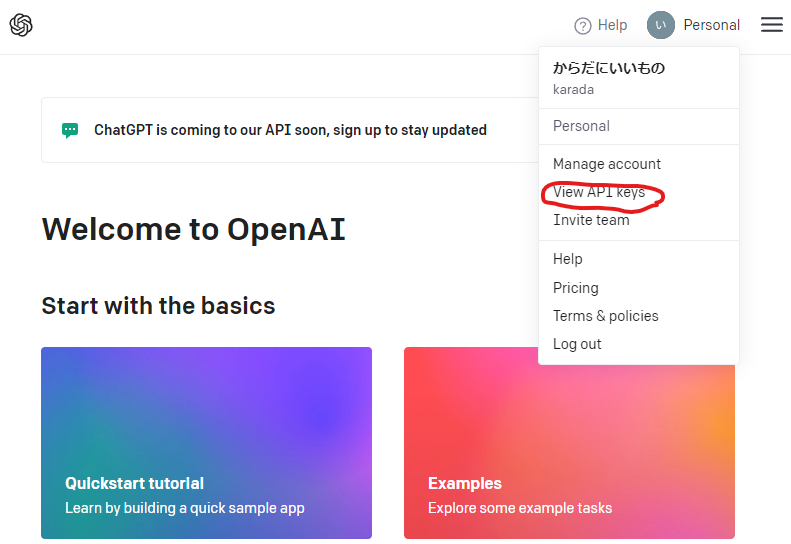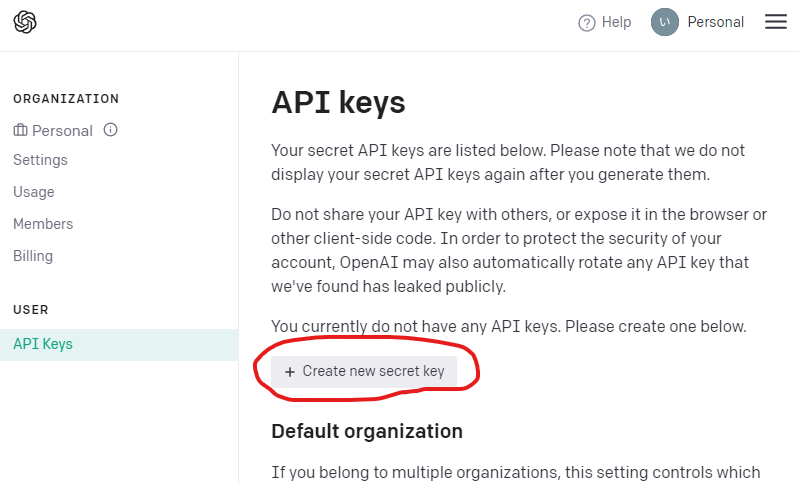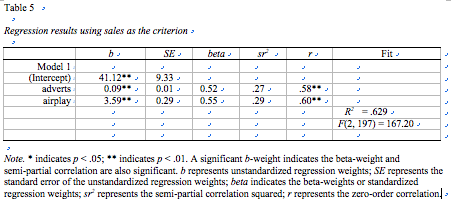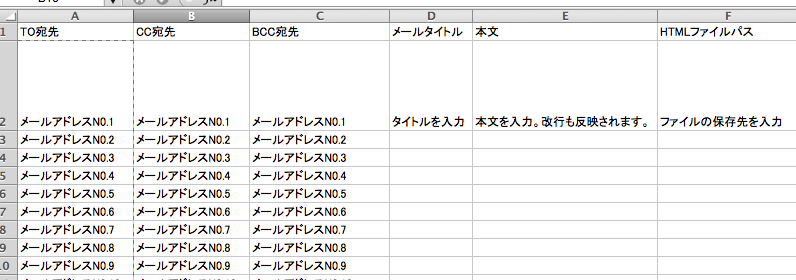This is an introduction to a package that allows you to use ChatGPT from R. To use it, you need to register an account and get an API key at the ChatGPT website.As well as asking questions to ChatGPT from R, you can enter comments in the code, create variable names from the code content, describe the code content, point out problems in the code, optimize the code? It contains commands like
The help file also describes a command to add to RStudio as “add in”, but the introductory version says “could not find function”.
Package version is 0.1.5. Checked with R version 4.2.2.
Get an API key for ChatGPT
Please visit the following URL to create an account. Please login after creating an account.
OpenAI API: https://platform.openai.com/account/api-keys
After logging in, click the account name icon in the upper right corner and click “View API Keys” as shown in the image below.

Click “Create new secret key” in the displayed “API keys” and copy the API key to Notepad or similar. Then use the package by pointing to the “Exsample”.

Install Package
Run the following command.
#Install Package
install.packages("chatgpt")Example
See the command and package help for details.
#Loading the library
library("chatgpt")
#Set API key for ChatGPT
#Replace "sk-XXXXXXXXXXXXXXXXX" with the API key you received
Sys.setenv(OPENAI_API_KEY = "sk-XXXXXXXXXXX")
###Question from R to ChatGPT: ask_chatgpt command#####
cat(ask_chatgpt("I want to create a box plot using the ggplot2 package."))
#Examples of results
#*** ChatGPT input:
#I want to create a box plot using the ggplot2 package.
#First, you need to install and load the ggplot2 package:
#install.packages("ggplot2")
#library(ggplot2)
#Then, you can create a box plot using the ggplot() function.
#You need to provide the data you are plotting and specify the x and y variables.
#For example, if you have a data frame called "dat" with the variables "x" and "y",
#you can create a box plot like this:
#ggplot(data = dat, aes(x = x, y = y)) + geom_boxplot()
#This type of use is also possible
cat(ask_chatgpt("Please tell me exactly how ChatGPT is related to R."))
#Examples of results
#*** ChatGPT input:
#Please tell me exactly how ChatGPT is related to R.
#ChatGPT is a natural language processing (NLP) model based on a recurrent
#neural network (RNN) architecture that is based on OpenAI’s GPT-2 model.
#ChatGPT combines GPT-2 with an encoder-decoder architecture to produce a
#conversational AI that can generate natural language responses to user queries.
#OpenAI’s GPT-2 model is written in Python and uses the popular R programming
#language for its statistical computations.
#The combination of GPT-2 and R makes ChatGPT a powerful tool for conversational
#AI development.
########
###Enter your comment to the code: comment_code command#####
cat(comment_code('PlotData +
geom_point(aes(x = carat, y = price, color = color)) +
facet_grid(.~color) +
labs(x = "carat", y = "price", colour = "Colour")'
))
#Examples of results
#*** ChatGPT input:
#Add inline comments to the following R code: "PlotData +
# geom_point(aes(x = carat, y = price, color = color)) +
# facet_grid(.~color) +
# labs(x = "carat", y = "price", colour = "Colour")"
# Plot data points, each point color-coded according to the color category
#geom_point(aes(x = carat, # x-axis is the carat size of each diamond
# y = price, # y-axis is the price of each diamond
# color = color)) # color of each point according to the color category
# Group each plot by color category
#facet_grid(.~color)
# Define axis labels
#labs(x = "carat", # x-axis label is carat
# y = "price", # y-axis label is price
# colour = "Colour") # color legend label is Colour
########
###Creating Variable Names from Code Contents: create_variable_name command#####
cat(create_variable_name("sample(c('A', 'B'), n = 5, replace = TRUE)"))
#Examples of results
#*** ChatGPT input:
#Give a good variable name to the result of the following R code:
#"sample(c('A', 'B'), n = 5, replace = TRUE)"
#sampled_words
#######
###Description of the code content:explore_code command#####
cat(explain_code("sample(c('A', 'B'), n = 5, replace = TRUE)"))
#*** ChatGPT input:
#Explain the following R code: "sample(c('A', 'B'), n = 5, replace = TRUE)"
#This code will generate a random sample of size 5 from the vector c('A', 'B'),
#with replacement. This means that each element of the sample can appear multiple
########
###Point out problems in the code: find_issues_in_code command#####
#I should point out that I did not run the set.seed command,
#so the command example is not reproducible.
cat(find_issues_in_code("sample(c('A', 'B'), n = 5, replace = TRUE)"))
#Examples of results
#*** ChatGPT input:
#Find issues or bugs in the following R code: "sample(c('A', 'B'), n = 5, replace = TRUE)"
#1. The code does not specify the random number generator to use,
#so the result may vary depending on the random number generator.
#2. The code does not include an argument to set the seed,
#so the result may not be reproducible.
#Examples of results:And of course there are answers like
#*** ChatGPT input:
#Find issues or bugs in the following R code: "sample(c('A', 'B'), n = 5, replace = TRUE)"
#No issues or bugs were found.
########
#Optimize command? The :optimize_code command
#i=1 shows 1, i=2 shows 2, all others show 3 or 4
#Replace with else if or what command instead of if?
cat(optimize_code(
"if(i == 1){
print(1)
}else{
if(i == 2){
print(2)
}else{
print(3)
}
print(4)
}"))
#Examples of results:bad example?
#*** ChatGPT input:
#Optimize the following R code: "if(i == 1){
# print(1)
# }else{
# if(i == 2){
# print(2)
# }else{
# print(3)
# }
# print(4)
# }"
#if(i == 1){
# print(1)
#} else if(i == 2){
# print(2)
#} else {
# print(3)
# print(4)
#}
########
#Add to RStudio as add in: run_addin/run_addin_ask_chatgpt command
#Could not find function in version 0.1.5
#run_addin("ChatGPT")
#run_addin_ask_chatgpt()I hope this makes your analysis a little easier !!


